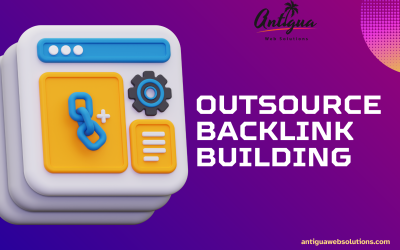Anchor text optimization plays a crucial role in search engine optimization (SEO). It impacts how search engines understand your content, evaluate backlinks, and rank your website. Whether you’re focusing on the anchor text ratio, anchor text backlinks, or mastering anchor text link building, a strong strategy can enhance your website’s visibility and drive organic traffic.
In this guide, we’ll explore effective anchor text best practices, break down common mistakes, and provide actionable tips to refine your SEO efforts for 2025.
What is Anchor Text?
Anchor text is the clickable, hyperlinked text within a webpage that directs users to another webpage. It typically appears in a distinct format, such as underlined or colored text, to differentiate it from regular text. Search engines use anchor text to interpret the relevance and context of the linked content.
Examples:
- Exact-Match Anchor Text: “Learn more about anchor text backlinks.”
- Generic Anchor Text: “Click here.”
Why is Anchor Text Important for SEO?
Search engines analyze anchor text backlinks to understand:
- Relevance: The topic of the linked page.
- Authority: The credibility of the source providing the link.
- User Intent: Whether the link fulfills user needs and expectations.
Optimizing anchor text helps improve your content’s discoverability while enhancing the credibility of the linked pages.
Types of Anchor Text
1. Exact-Match Anchor Text
This uses the exact keyword you’re targeting.
Example: “Optimize your anchor text ratio for better SEO.”
2. Partial-Match Anchor Text
Includes a variation of your target keyword.
Example: “Discover the best strategies for anchor text backlinks.”
3. Branded Anchor Text
This features your brand name.
Example: “Learn more about SEO at Antigua Web Solutions.”
4. Naked URL Anchor Text
The URL itself serves as the anchor text.
Example: “Visit our website at **www.antiguawebsolutions.com**.”
5. Generic Anchor Text
Uses common phrases like “Click here” or “Learn more.”
Example: “Click here for a detailed guide.”
6. Long-Tail Anchor Text
A descriptive phrase or sentence that includes the keyword.
Example: “Find out how to improve your anchor text link building strategy in 2025.”
Best Practices for Anchor Text Optimization
1. Maintain an Optimal Anchor Text Ratio
A natural anchor text ratio is essential to avoid penalties for over-optimization. In 2025, the recommended ratio is:
- 30-40% Branded Anchor Text: Links featuring your brand name.
- 20-30% Generic Anchor Text: Neutral terms like “Click here.”
- 10-15% Exact-Match Anchor Text: Keyword-focused text.
- 10-15% Partial-Match Anchor Text: Keyword variations.
- 5-10% Naked URLs: Direct links to your website.
2. Ensure Relevance and Context
Each anchor text backlink should align with the context of the linked content. For example, linking to an SEO guide with the text “SEO strategies” provides relevance and clarity.
3. Diversify Anchor Text Types
Avoid repetitive anchor text patterns. A diverse mix signals to search engines that your links are natural and user-focused.
4. Use High-Quality Backlinks
Build anchor text backlinks from reputable websites with high domain authority. Tools like Ahrefs and SEMrush can help identify valuable backlink opportunities.
5. Avoid Over-Optimization
Excessive use of exact-match keywords can trigger penalties. Keep your anchor text link building strategy natural and varied.
6. Incorporate LSI Keywords
Latent Semantic Indexing (LSI) keywords enhance contextual relevance. Include related terms to improve your anchor text’s impact without overusing target keywords.
7. Optimize for User Intent
Anchor text should align with user expectations. For example, if your link promises a “guide,” the linked page should deliver comprehensive, actionable content.
Common Mistakes to Avoid
1. Overusing Exact-Match Keywords
Repetition can lead to search engine penalties. Balance exact-match text with variations and branded terms.
2. Linking to Irrelevant Pages
Irrelevant links confuse users and reduce credibility. Ensure all links provide value.
3. Using Excessive Generic Anchor Text
While generic terms like “Click here” are acceptable in moderation, overuse diminishes SEO potential.
4. Ignoring Mobile Users
Ensure that anchor text and links are mobile-friendly, as mobile-first indexing is now a priority for search engines.
Tools for Anchor Text Optimization
1. Ahrefs
Analyze your backlink profile, assess anchor text ratio, and identify improvement opportunities.
2. SEMrush
Monitor anchor text patterns, track backlinks, and evaluate competitor strategies.
3. Moz
Provides domain authority metrics and backlink analysis for improving link-building campaigns.
Anchor Text and Google Updates
Google’s algorithm prioritizes user-focused content and penalizes manipulative practices. Keep these guidelines in mind:
- Focus on quality over quantity.
- Avoid spammy or irrelevant anchor text.
- Build natural, user-friendly links.
Conclusion
Mastering anchor text optimization is a key component of effective SEO. By maintaining a balanced anchor text ratio, focusing on relevance, and avoiding over-optimization, you can improve your website’s visibility and user experience.
At Antigua Web Solutions, we specialize in advanced SEO strategies, including anchor text link building and backlink analysis. Contact us today to refine your SEO efforts and achieve sustainable growth in 2025.





